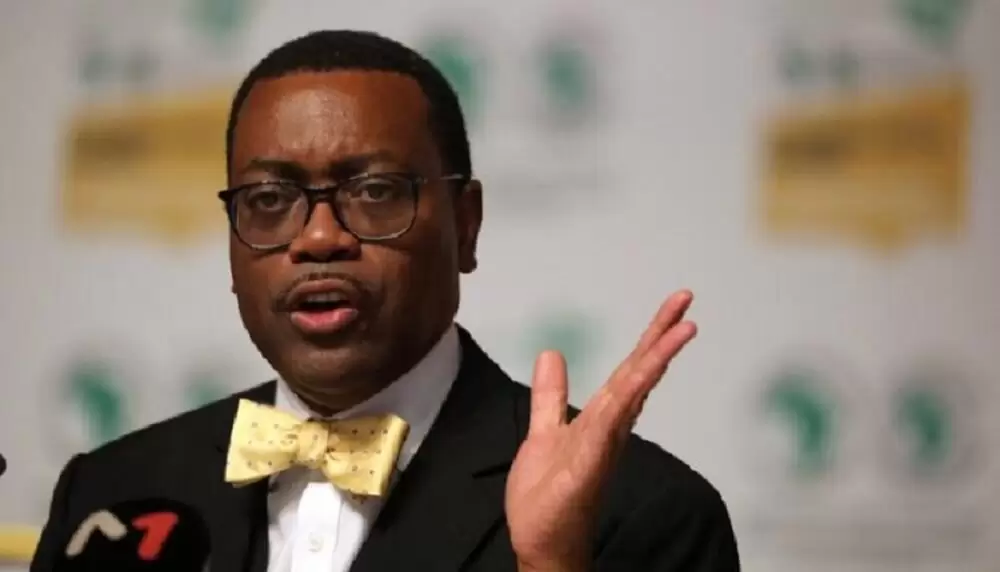AfDB Tackles IMF, Paris Club, Says Global Financial Architecture Badly Organised To Solve Debt Crisis In Africa
… Insists SDG Will Fail If Precautionary Measures Are Ignored
The African Development Bank has criticized multilateral and bilateral creditors and the financial architecture they established to tackle the rising debt crisis among poor and developing countries.
Advertisement
The President of the AfDB, Akinwunmi Adesina made the criticism at the Presidential Dialogue on the “Changing Global Financial Architecture and the Role of Multilateral Development Banks.”
At the dialogue, the AfDB boss said raising debts are an obstacle to the achievement of Sustainable Development Goals.
The SDG according to the United Nations has a deadline that ends by 2030, but it is currently threatened.
Adesina lamented that for the SDGs to succeed globally, they need to succeed in Africa.
Advertisement
According to him, global financial architecture needs to be modified to tackle more effectively global challenges, and to accelerate the achievement of the SDG.
Adesina said, “With only eight years to the target date for the SDGs, the world is off-track of achieving them… Global financial architecture is ill-prepared to tackle rising debt crises, especially in developing countries and Africa.
“The global financial architecture must respond effectively to tackle the rising debt challenges of African countries in the wake of the financial stresses posed by Covid-19, climate change, and the recent conflict between Russia and Ukraine.
“There is an urgent need to reform the current international financial architecture to make it fit for orderly debt restructuring.
“Debt resolution in Africa, especially outside Paris Club processes, has often been disorderly and protracted, with costly economic consequences.
Advertisement
“To avoid high debt resolution costs and limit the likelihood that debt crises re-emerge, the international community needs to push for enhanced transparency and global coordination among creditors.”
Adesina explained further that although median public debt has declined to 65 per cent of GDP from the 68 per cent in 2021 due to positive effects of debt relief efforts, including the debt service suspension initiative, debt levels are still higher than pre-pandemic level of 61 per cent.
“The structure of Africa’s debt has also changed dramatically. While bilateral debt accounts for 27 per cent of debt compared to 52 per cent in 2000, commercial debt accounts for 43 per cent of total debt, compared to 20 per cent in 2000. The expansion and fragmentation of the creditor base complicates debt resolution by the Bretton Woods Institutions.”
The AfDB President went further to criticise global contingency financing saying it is not working well for Africa.
He highlighted the importance of the Special Drawing Rights (SDRs) issued by the International Monetary Fund.
According to him, the SDR has provided significant resources to help countries to deal with their ever-shrinking fiscal space.
Advertisement
“But of the $650 billion of SDRs issued, Africa got only $33 billion or 4.5 per cent. The African Union has called for a re-allocation of $100 billion of SDRs to Africa, with a portion of it going through the African Development Bank, as a prescribed holder of SDRs.
“The African Development Bank has been spearheading the call for SDR re-channeling by developed countries to multilateral development banks.
“Multilateral development banks can leverage the SDRs. At the African Development Bank, we can leverage the SDRs by a factor of 3–4 times. It will also allow us to provide greater financing to regional and national development banks across Africa, as part of the Finance in Common, to accelerate achievement of the SDGs.
“I am delighted that the innovative model for rechannelling SDRs to multilateral development banks, developed by the African Development Bank, with the collaboration of the Inter-American Development Bank, has been determined by the International Monetary Fund staff to meet the critical reserve asset status quality for SDRs.
“This means SDRs donor countries can now channel their SDRs through the African Development Bank and other Multilateral Development Banks, and still count them as reserves.
“This is indeed highly transformational and will be a game changer for Africa at no cost to taxpayers in SDR donor countries. What we need now is to have five lead donor countries to form a group to provide SDRs through the African Development Bank.”
Adesina said the current financing instruments adopted are far from being able to leverage the resources to tackle development challenges.
He, however, called for a change in the business models of multilateral financial institutions.
He added, “For multilateral financial architecture to be more effective, there is a need for greater leverage of private sector financing for development.”



